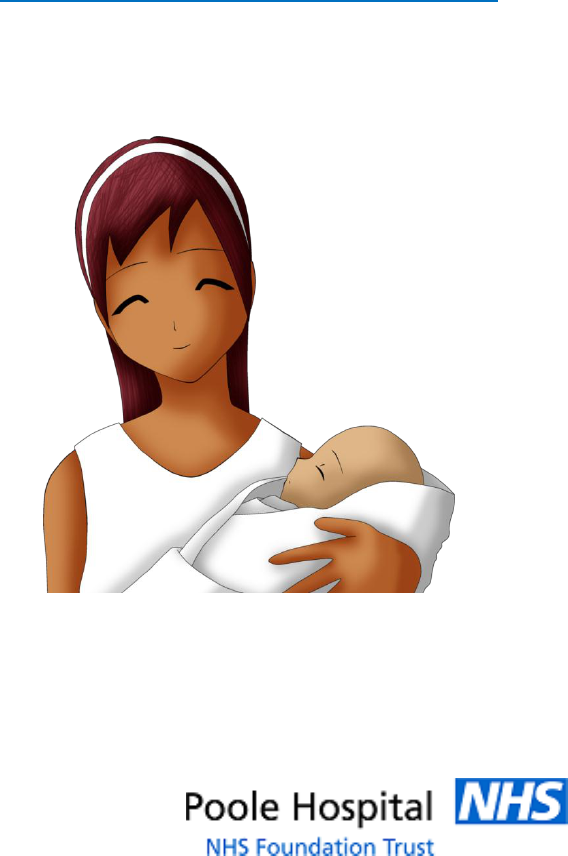
1
Author - Claire White & HBS Team March 2017
The Latent Phase of Labour

2
Author - Claire White & HBS Team March 2017
The Latent Phase of Labour
Working out whether you are in the early stages of labour or not, can
be very confusing. This leaflet will answer some of your questions
whilst providing suggestions to help through this early part of your
labour.
Remember that every woman is unique and so is her labour. For some
it can be quick, but for others it can go on for several days and be a
tiring time.
We still don’t know what starts labour but it is known that the
hormones needed to help your labour start, can be heavily influenced
by stress, tiredness and a fear of pain or “what is to come”.
The main thing to remember is –
Stay calm and relax

3
Author - Claire White & HBS Team March 2017
What is the latent phase of labour?
The latent phase of labour is the beginning of the first part of your
labour, before you reach the active stage.
Some women will have backache and cramps, or episodes of
contractions that could last a few hours, but then stop and start again
the next day.
This phase can take from 6-10 hours up to 2-3 days although it is often
much shorter for 2
nd
and subsequent babies.
It can be a tiring and exhausting time but it is completely normal. It
helps to remain relaxed and to stay at home in your own surroundings
as long as you can.

4
Author - Claire White & HBS Team March 2017
The stages of labour
Latent Labour: Uncomfortable contractions which are often irregular.
They may feel sharp but are short lasting.
The neck of the womb (cervix) has been long and closed during your
pregnancy. These first contractions help to soften the cervix and
prepare your body for active labour.
As the contractions become closer together, longer and stronger, the
cervix will begin to shorten and open up (dilate). When the cervix is
4cm dilated and the contractions are regular (approximately 4 in 10
minutes, lasting at least 45 seconds), then labour has become active.
1
st
stage: Regular, painful contractions will gradually dilate your cervix
to 10 cm (fully dilated).
2
nd
stage: when the baby is pushed through the vagina and is born.
3
rd
stage: the placenta (afterbirth) is delivered.

5
Author - Claire White & HBS Team March 2017
During the latent phase of labour, you may have a “show” and lose part
of your mucous plug. This may be streaked with blood and is perfectly
normal. We do not need to see you unless you are concerned or you

6
Author - Claire White & HBS Team March 2017
feel that the blood is more than a streak or you are unsure that it may
have been your waters breaking.
If all is well, this is a good sign that your cervix has started to change
and your body is preparing for labour, however it doesn’t necessarily
mean it will happen that day.
Your body is doing a lot of important work at this time, especially if it is
your first baby. Think of your cervix like a turtle neck jumper being
pulled over your head. It starts as a long thick tube and is closed. As it
starts to be pulled over, it shortens and begins to open up, eventually
becoming thin and open against the head.

7
Author - Claire White & HBS Team March 2017
Coping with the latent phase of labour
Relax as much as possible, you can do this by trying a bath, as
warm water is known to benefit in this stage of labour.
Some women find massage relaxing as this involves the use of
therapeutic touch to relax you, both emotionally and physically.
It can help backache, ease swollen ankles, lowers blood
pressure and relaxes stiff muscles. We know that touch
impulses reach the brain quicker than pain impulses, so
massage helps by releasing “feel good” chemicals, which act as
natural pain killers, also reducing stress hormones.
Take long, deep, slow breaths during the contractions, this
helps reduce pain and gets you into good habits for when you
are in active labour.
Try and have regular rests and naps. You may not sleep deeply
or for long if your contractions are regular but rest at this time
is important.

8
Author - Claire White & HBS Team March 2017
Eat and drink regularly. You need to keep well hydrated and have
good energy levels on board. Try eating small, light meals
containing carbohydrates and consider energy drinks as well as
plenty of water.
Distract yourself as much as possible. Find a good book to read,
music to listen to or film to watch. If possible, sit on a birthing
ball whilst doing this as this can help the baby get into a good
position and alleviate some of the discomfort you are feeling.
If you have a TENS machine, this is a good time to use it,
particularly if you are suffering with back pain.
Empty your bladder regularly. A full bladder can push against
your womb and affect your contractions, sometimes causing
them to stop. It can also mean the baby has less room to move
about and get into a good position. Additionally, it is good to
empty your bowels (if you need to).

9
Author - Claire White & HBS Team March 2017
Stay at home. The best place for any woman in the latent phase
of labour is at home in familiar surroundings, supported by
people she trusts. It is a good idea for you to stay at home for as
long as possible where you are more likely to remain relaxed
and comfortable. Staying at home will encourage the
production of oxytocin (the hormone required to get into
labour) as well as endorphins (the body’s own natural pain
relievers). There is also evidence to show that the further on in
labour you are when you come in to hospital, the more likely
you are to have a normal birth.
If you attend the maternity unit for assessment and you are in
the latent phase, it will be recommended that you return home
again and given advice on pain relief and coping mechanisms.
Research suggests that labour wards are not the appropriate
environment for women who are in the latent phase of labour.
It is important to keep an eye on baby’s movements during this
stage, as you normally would at any other time. Some women
find it difficult to know if their baby is moving when they are
contracting and tired so if you are not sure, you must phone the
hospital for advice. In addition, if you feel your waters may
have broken, please phone the Labour Line telephone number
0300 369 0388. We hope you find this leaflet useful and feel
more relaxed and prepared for the onset of your labour.
If you require any help or advice please do not hesitate to call:
Labour Line 0300 369 0388, Haven Birthing Suite 01202
448509
